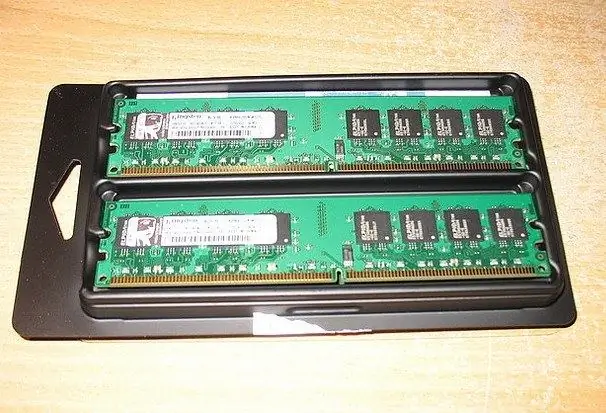Random access memory is an important component of a computer; the speed of the system largely depends on its parameters. The "faster" the memory and the higher its volume, the more comfortable it is to work on the computer. Sometimes the user needs to find out the type and size of RAM.

Instructions
Step 1
The need to view the RAM data usually arises when the computer is too slow or before adding additional RAM lines. The easiest way to see the memory size is by right-clicking the “My Computer” icon on the desktop and selecting “Properties” from the context menu. In the lower part of the window that opens, the installed OS, the type and frequency of the processor, the size of the RAM will be indicated.
Step 2
To get the most detailed information about the memory used, use the Aida64 program, also known as Everest. Run the program, in its left part select: "Computer" - "Summary information". In the right part of the window, you will see detailed information about the configuration of your computer, including the installed memory. An example of data output from RAM by the Aida64 program: DIMM1: Elpida EBE21UE8AESA-6E-F 2 GB DDR2-667 DDR2 SDRAM (5-5-5-15 @ 333 MHz) (4-4-4-12 @ 266 MHz) (3- 3-3-9 @ 200 MHz).
Step 3
The Astra32 program has good capabilities for collecting information about the computer. By selecting the section "Memory modules" on the right side of the program, you will receive very detailed information on any of the RAM lines.
Step 4
Information on the amount and use of RAM can be obtained through the command line. Open: "Start" - "All Programs" - "Accessories" - "Command Prompt". In the window that opens, enter the systeminfo command and press Enter.
Step 5
How to choose RAM if you need to replace it or add it? First of all, only buy RAM from reputable manufacturers - for example, Samsung, Kingston Corsair, Patriot. Consider what types of memory your computer motherboard supports. Choose modules with the highest clock speed - provided that the motherboard supports it. You can also compare the timing data (lines like 5-5-5-15, etc.) - the lower the better. Instead of two lines of memory of 1024 MB, it is more correct to choose one for 2048 MB, in this case you will have a free slot.






